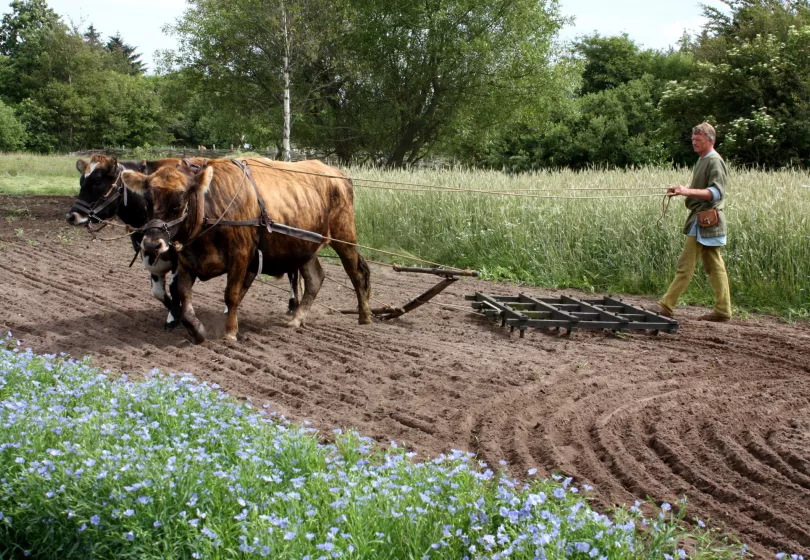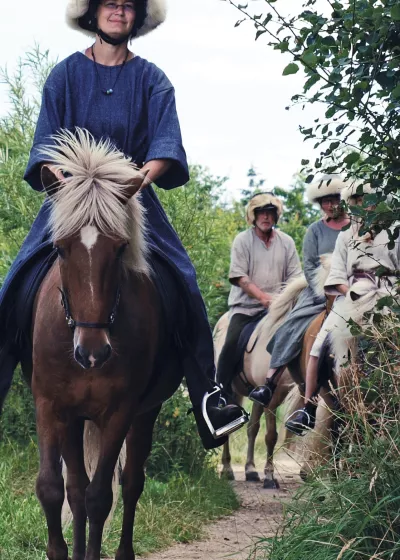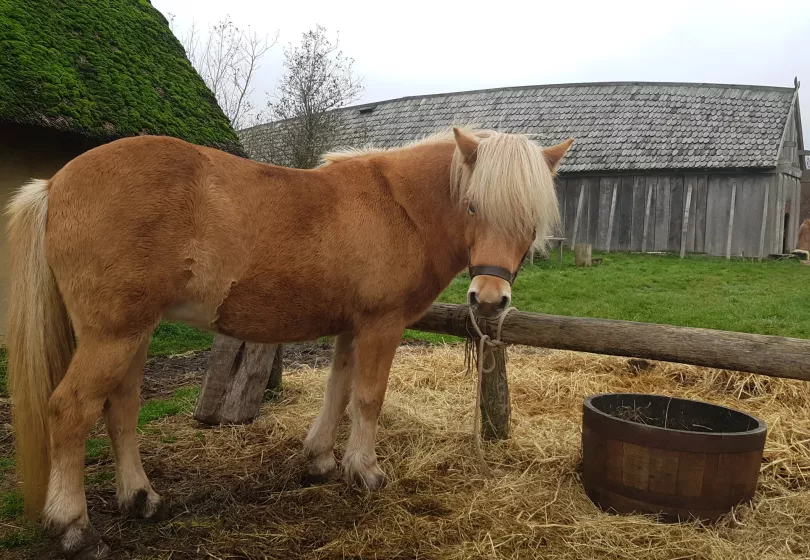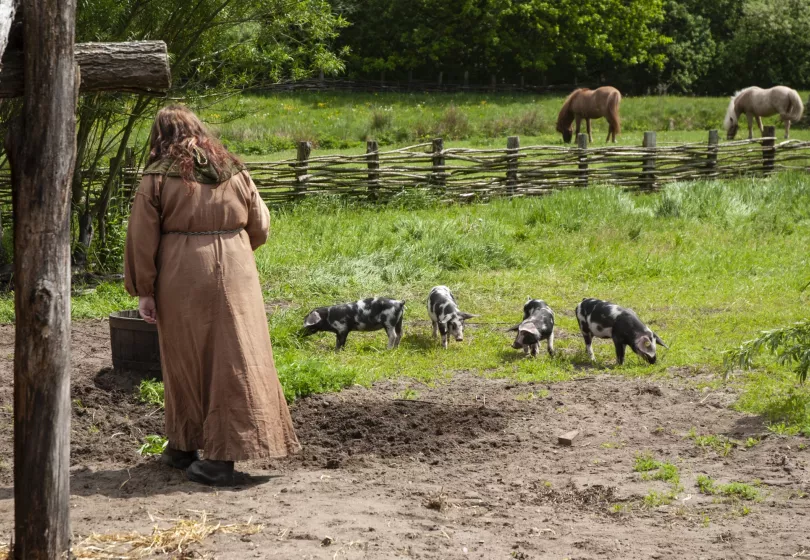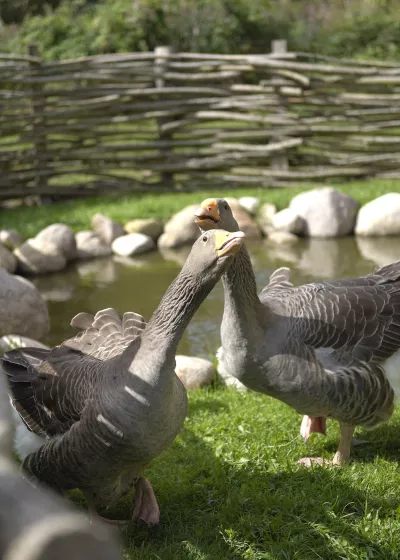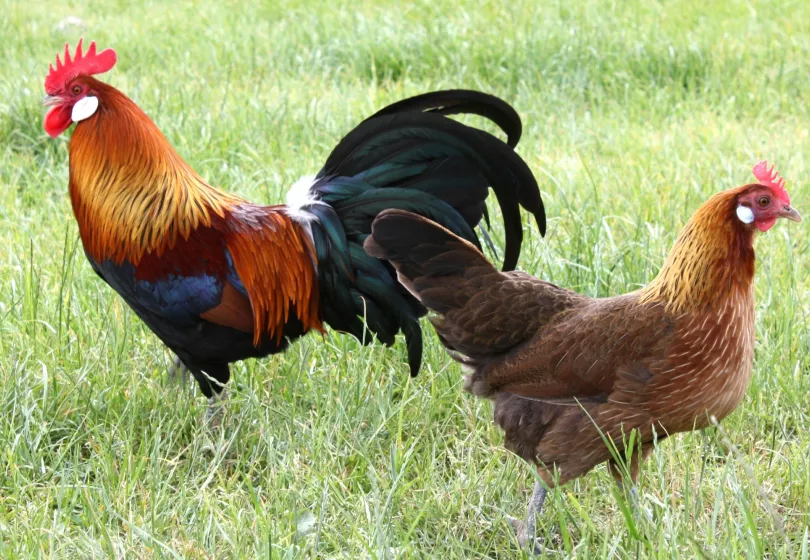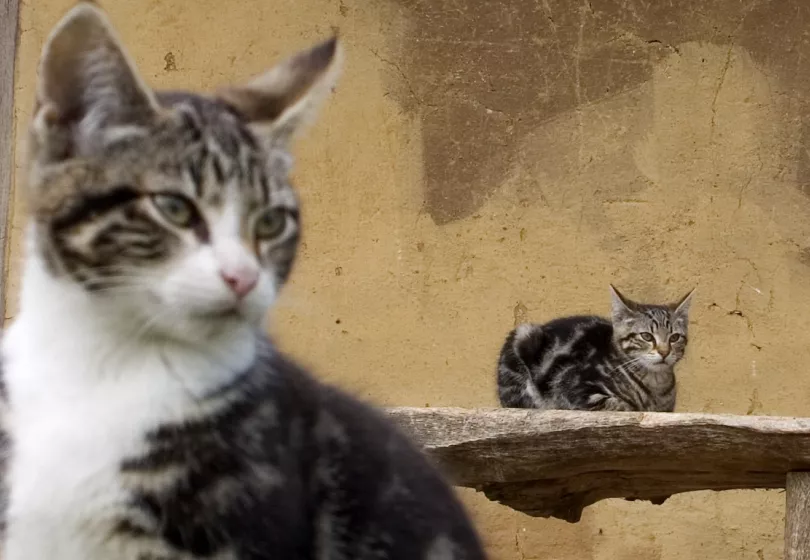Icelandic cattle
Cows in the Viking Age were somewhat smaller than our modern dairy and beef cattle. Genetic studies have shown that the Icelandic cattle are the breed that comes closest to the old breeds, for instance the Norwegian native breeds Doele, Telemark and Troender. Nowadays, however, these breeds have been crossed with others, whereas the Icelandic cows are the direct descendants of the cows the Norwegian Vikings took with them when they colonised Iceland at the end of the 9th century.
The Icelandic cows vary greatly in colour and markings. Due to selective breeding, most of the cattle no longer have horns, but in the Viking Age cows would have had varying lengths of horns.
The heath sheep
Ribe Viking Centre has heath sheep, because this breed is fairly pure, and very similar to the Viking breeds of sheep. It is small, weighing 12-18 kilos, and has a naturally short tail. Both sexes have spiral horns, but the rams' are larger. Their fleece comes in various shades of grey. There are two sorts of wool: a soft, short and isolating inner wool close to their bodies, and the outer wool which is long, thick and smooth, and can make water glance off the fleece. In late spring, when the frosts are over and the grass has begun to grow, the lambs are born. The heath sheep usually bears only one lamb, which will be completely coal black for the first month.
At about the turn of the century, the heath sheep died out in Denmark, because its wool couldn't compete with that of the English breeds. However, the breed survived south of the Danish border, where it was called Lüneburger Heidschnucken, and in about 1950 it was reintroduced to Denmark, where it can now be found in small numbers all over the country.
The Icelandic horse
The Icelandic horse is a direct descendant of the horses that the Vikings took with them to Iceland in the 9th century. As no more horses have been introduced to Iceland since 1100 AD, the breed has retained its original good characteristics: it is unusually healthy, sturdy, hardy and can stand all types of weather. This breed also still has an aptitude for all five gaits: walk, trot, pace, gallop and tölt. When the horse tölts, it always has at least one hoof on the ground, and the rider hardly moves in the saddle. In this way, horse and rider can travel for hours over steep and uneven terrain without tiring.
The Icelandic horse is very versatile, and lives for a long time. To
allow the horse to acquire a stocky, tough and muscular build, it is
first ridden when it is about 4 years old. The horses are all small and
tough in build, but their colour can be anything from light yellow to
coal black. They have very individual character traits, and often a foal
will be given an Icelandic name referring to its character,
temperament, colour or time of birth, such as Ganti (mischief), Lysingur
(pale horse), or Solfari (the one who travels with the sun).
The Danish piebald landrace pig
The Vikings really valued the pig. The adaptable, omnivorous animal was easy to keep, and the fat meat was an important part of the diet. The Danish piebald landrace stems from the old Danish land pig. It is very hardy and can be kept outdoors throughout the year. The sows show excellent maternal qualities and have large litters of viable piglets.
The pig is also mentioned in the Norse mythology. Saehrimnir is the boar killed and eaten every day at Valhalla and by the morning it comes back to life. Gullinbursti is the god Freyr’s boar. It has a golden mane and can run faster than any horse.
The Danish hen
Finds from kitchen middens show that the Danes have kept hens since the Iron Age. This breed originated in the Himalayas, and may have been brought all the long way to Scandinavia as eggs or travel provisions. The brown Danish hen is one of the few pure breeds in Europe.
The Danish goose
Geese have also been kept as useful animals in Denmark since antiquity. The eggs may have been collected from wild birds and then hatched in the hen house. This was standard practice right through to the middle of the 20th century, when it was banned. Archaeological finds show that geese were popular in the Viking Age, both because of the meat and because the flight feathers would be used for arrows. The Danish goose, which was bred from the wild goose, is usually grey or mottled grey-and-white.


